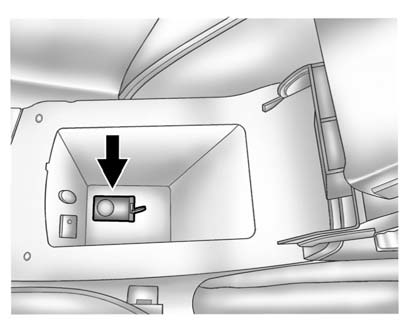Programming with a Recognized Transmitter (Keyless Access Vehicles Only)
A new transmitter can be programmed to the vehicle when there is one recognized transmitter.
To program, the vehicle must be off and all of the transmitters, both currently recognized and new, must be with you.
1. Place the recognized transmitter(s) in the cupholder.
2. Insert the vehicle key of the new transmitter into the key lock cylinder
located on the outside of the driver door and turn the key to the unlock
position five times within ten seconds.
The Driver Information Center (DIC) displays READY TO LEARN ELECTRONIC KEY #2, 3, 4, ETC.

3. Place the new transmitter into the transmitter pocket.
The transmitter pocket is inside the center console storage area located between the driver and front passenger seats.
The storage area will need to be opened and the storage tray lifted up to access the transmitter pocket.
4. Press the ignition. When the transmitter is learned the DIC display will
show that it is ready to program the next transmitter.
5. Remove the transmitter from the transmitter pocket and press  on the" width=18
height=20 id="_x0000_i1150" src="images/books/1183/1/index.41.gif" border=0>on the
transmitter.
on the" width=18
height=20 id="_x0000_i1150" src="images/books/1183/1/index.41.gif" border=0>on the
transmitter.
To program additional transmitters, repeat Steps 3 through 5.
When all additional transmitters are programmed, press and hold the ignition for 10 seconds to exit programming mode.
See also:
Clock
The analog clock is on the
instrument panel above the radio.
The clock is not connected with any
other vehicle system and runs by
itself. To adjust the clock:
1. Locate the adjustment buttons ...
Starting the Vehicle Messages
PRESS BRAKE TO START VEHICLE
This message is displayed when attempting to start the vehicle without first
pressing the brake pedal.
SERVICE KEYLESS START SYSTEM
This message is displayed if ...
Rear Vision Camera (RVC)
The vehicle may have a Rear Vision Camera (RVC) system. Read this entire
section before using it.
The RVC system can assist the driver when backing up by displaying a view of
the area behind the ...






